by Lisa Cooke | Jun 18, 2013 | 01 What's New, 1950, Census, Records & databases
Hands up, who wants to help prep the 1950 U.S. census for us all to explore?
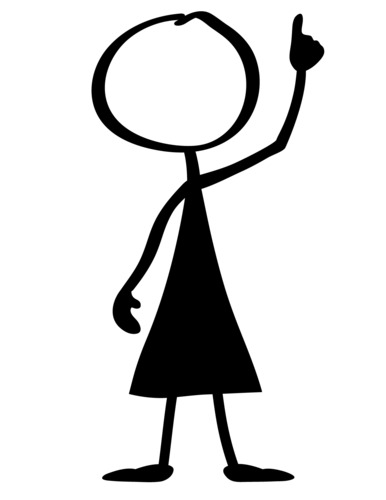
The 1950 census won’t be released to the public for seven more years, but it took just longer than that to create the locational tools that millions of researchers have used to find their families on the 1940 census.
The dynamic duo of Steve Morse and Joel Weintraub, who produced the locational tools for the 1940 census on the Morse One-Step site, are recruiting 200+ volunteers to help transcribe enumeration district definitions and create urban area street indexes for the 1950 census.
Their “job description” for these volunteers sounds really meaty and hands-on: “These projects aren’t for everybody. Volunteers should have basic computer skills, typing skills, have access to the Internet, be detail people but not perfectionists, be independent workers and able to follow instructions, be patient enough to handle large amounts of information, and be comfortable with projects that may take weeks or months, not hours, to accomplish. You should be able to handle and manipulate images (jpgs) of maps and Enumeration District (ED) definition scans. A large computer monitor would be desirable but not essential. We will provide instructions for carrying out the work, and a place to ask questions. Volunteers may use some free programs to help speed up the entry process. We expect volunteers to make steady progress on their assignments, and we have the luxury of time right now to do it well.”
Learn more about the project here, and try the 1940 One-Step locational tools here.
by Lisa Cooke | Jun 14, 2016 | 01 What's New, Who Do You Think You Are?
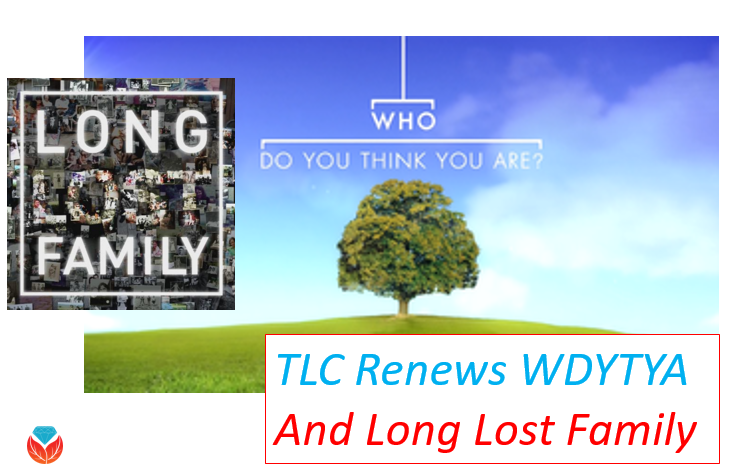 Genealogy is coming back to TV. TLC has renewed “Who Do You Think You Are?” and “Long Lost Family” for additional seasons.
Genealogy is coming back to TV. TLC has renewed “Who Do You Think You Are?” and “Long Lost Family” for additional seasons.
TLC announced on June 9th that the network will have additional seasons of both “Who Do You Think You Are?” and “Long Lost Family.” Both series averaged over 1.8 million viewers.
The two-time Emmy-nominated WDYTYA follows celebrities as they take a personal journey of their family tree. Recent celebrities included Bryan Cranston, who uncovered an ancestor’s heroic dedication during the Civil War, and Molly Ringwald, who learned about the dangerous conditions of her coal-mining ancestors.
The “Long Lost Family” series features the emotional and touching stories of people who have had a separation from their family. The show reunites these individuals and shares their stories of adoption, mystery, and questions. This past season reunited several family members, including a mother and daughter who worked together and did not realize they were related. “Long Lost Family” is hosted by Chris Jacobs and Lisa Joyner, who also share their own stories of adoption.
Ancestry will be teaming up with TLC again as a sponsor for both series. As part of the sponsorship, Ancestry provides the family history research to help make discoveries possible on both series.
Are you a fan of these genealogy-themed shows? We’d love to hear which stories have touched you the most. Please leave a comment below:
by Lisa Cooke | Apr 23, 2015 | 01 What's New, 1950, Brick Wall, Research Skills
When we try to research our family history from recent decades, we often find privacy barriers: U.S. census records for 1950 and beyond
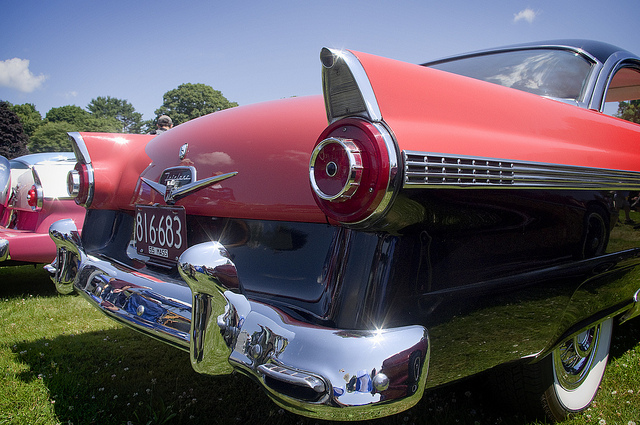
1950s Fords by Bob P.B. on Flickr Creative Commons. Some rights reserved.
are closed, as are many vital records. Here are some ideas for finding family history in the 1950s and beyond:
1. Interview relatives. The good news is that in many families, there are relatives around who remembers the 1950s. If there’s not, then look to the memories of the next living generation.
Interviewing a relative is one of the most fun and meaningful ways to learn your family history. You can ask specific and personal questions, deepen your relationships with those you interview and gain a better understanding of the lives that led to you. Older people often love to have someone take a sincere interest in them. The free Family History Made Easy podcast episode 2 has a great segment on interviewing your relatives.
2. Read the newspaper. Use newspapers to find obituaries and discover more about daily life, current events, popular opinions of the time, prices for everyday items and more. It’s getting easier than ever to find and search digitized newspapers online, but more recent papers may still be under copyright protection.
Use online resources like to discover what newspapers served your family’s neighborhood, or even whether an ethnic, labor or religious press would have mentioned them. In the US, I always start with the US Newspaper Directory at Chronicling America to search for ALL newspapers published in a particular place and time, as well as the names of libraries or archives that have copies of these papers. Historical societies and local public libraries are also wonderful places to look for newspapers. My book, How to Find Your Family History in Newspapers, teaches readers what to look for in papers and how to locate them online and offline.
3. Search city directories. By the 1950s, most towns and cities published directories of residents, mostly with telephone numbers. I use annual directory listings to track buy generic medication online families from year to year. These might give you your first clue that someone moved, married, separated, divorced or died! I can often find their exact street address (great for mapping!), who lived at the house and sometimes additional information like where they worked, what their job was or who they worked for.
Ancestry.com has over a billion U.S. city directory entries online, up to 1989. But most other online city directory collections aren’t so recent. Look for city directories first in hometown public libraries. Check with larger regional or state libraries and major genealogical libraries.
4. Search for historical video footage. YouTube isn’t just for viral cat videos. Look there for old newsreels, people’s home movies and other vintage footage. It’s not unusual to find films showing the old family neighborhood, a school or community function, or other footage that might be relevant to your relatives.
Use the YouTube search box like you would the regular Google search box. Enter terms like “history,” “old,” “footage,” or “film” along with the names, places or events you hope to find. For example, the name of a parade your relative marched in, a team he played on, a company she worked for, a street he lived on and the like. It’s hit and miss, for sure, but sometimes you can find something very special.
My Contributing Editor Sunny Morton tried this tip. Almost immediately, with a search on the name of her husband’s ancestral hometown and the word “history,” she found a 1937 newsreel with her husband’s great-grandfather driving his fire truck with his celebrity dog! She recognized him from old photos and had read about his dog in the newspapers. (Click here to read her stunned post.) Learn more about searching for old videos in my all-new second edition of The Genealogist’s Google Toolbox, which has a totally updated chapter on YouTube.
Click here to read more about the 1950s U.S. census: when it will be out and how you can work around its privacy restrictions.
by Lisa Cooke | Mar 15, 2016 | 01 What's New, Beginner, Family History Podcast, Genealogy Gems Podcast, Listeners & Readers
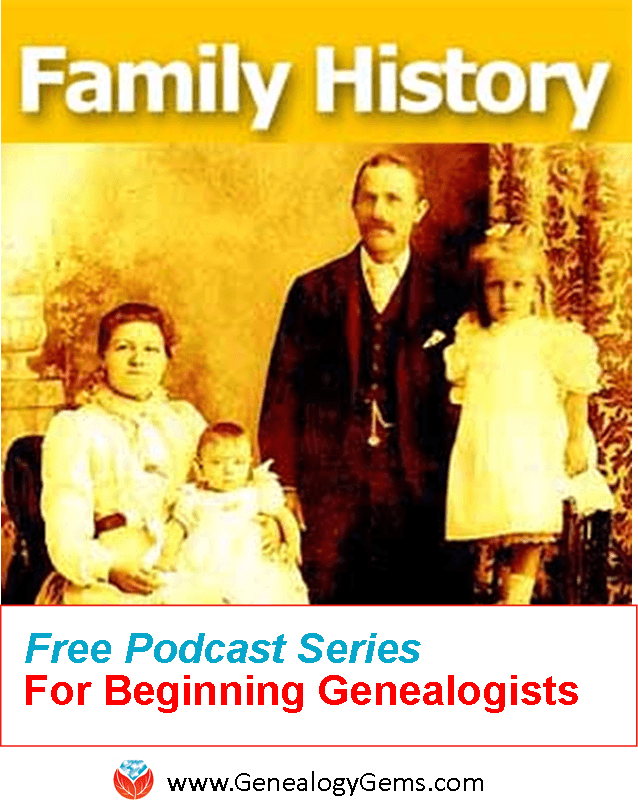 A free podcast series for beginner genealogy, The Family History: Genealogy Made Easy podcast series offers step-by-step how-to instruction and inspiration.
A free podcast series for beginner genealogy, The Family History: Genealogy Made Easy podcast series offers step-by-step how-to instruction and inspiration.
Are you just getting started in family history? Or are you ready for a genealogy “do-over” with a more systematic approach to learning and researching? My free beginner genealogy podcast series, Family History: Genealogy Made Easy, may be just what you’re looking for. Kim from Alpine, Utah, wrote in to say how much that series has helped her:
“Dear Lisa,
I’ve downloaded all of the Family History Made Easy podcasts and am making my way through them while I exercise. I just finished listening to your archived Family History Made Easy podcast #31 “Immigration and Naturalization Records, part 3” with Stephen Danko, not realizing there were also parts 1 and 2. When I got on my computer to look at the show notes and realized there were two more episodes in this series to listen to, I was thrilled: I have an incentive now to go walking at least twice more this week! The podcasts are the motivation for me to get out and get the blood circulating!
I was amazed at all there is to learn from ship manifests, and have a plan to go back and review those I’ve already captured. I’m sure there are many new things I will be able to learn from them, after learning about all of the marks and notations.
Thank you for producing this entire series of informative, educational, instructive, and interesting, podcasts, as well as the Genealogy Gems podcasts. They are a service to the genealogy community and help elevate the quality of our family history work. I wish you well and hope you continue producing them for a long time!
 Here’s how to access the free series:
Here’s how to access the free series:
1. Go to www.genealogygems.com
2. Hover your mouse over Podcast
3. Click on Family History: Genealogy Made Easy
4. Episodes are in numerical order
5. Click the link for episode 1 called Getting Started
6. The web page is called “show notes” and has all the information covered in that episode.
7. Click “Play Now” link at the top and then click the Play button to listen on your computer, or you can subscribe through iTunes. Here’s a link to frequently asked questions about podcasts.
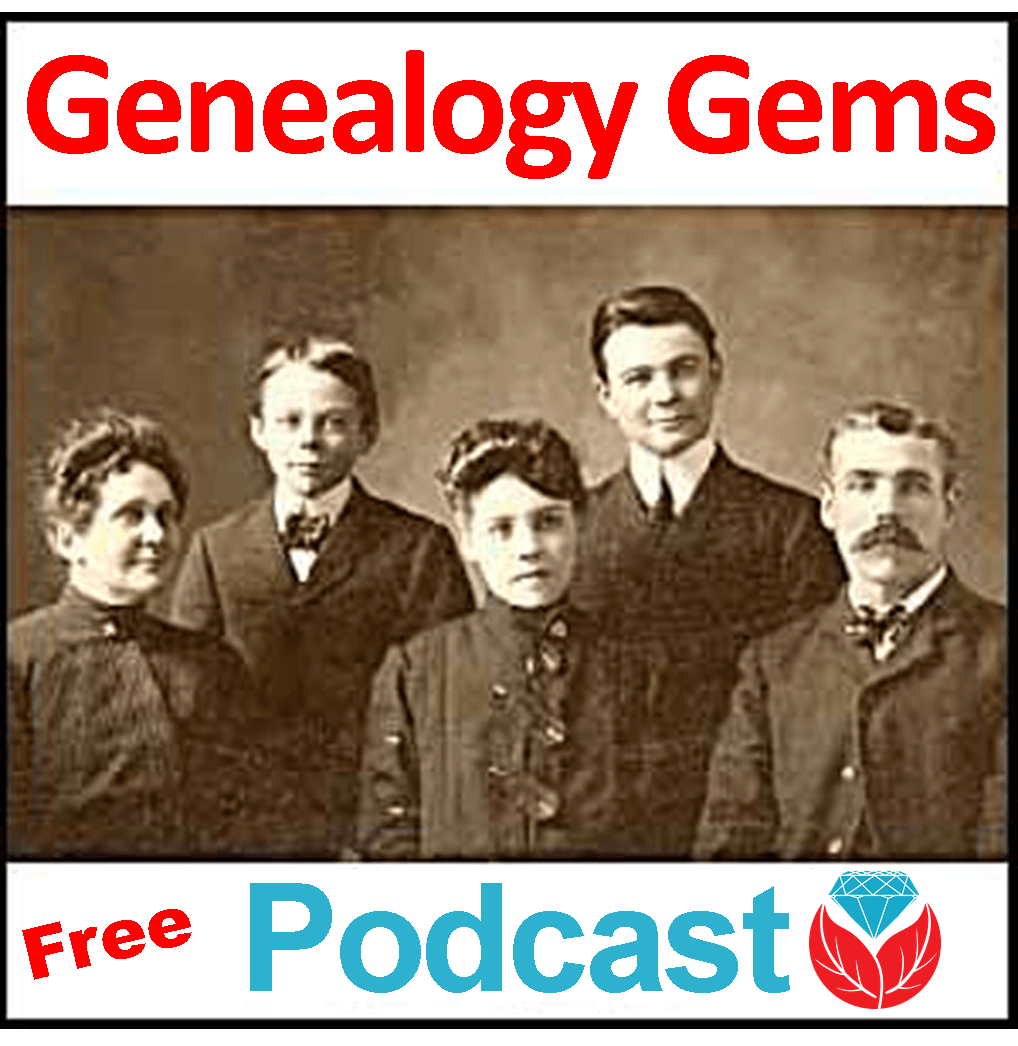 Along with the step-by-step beginner genealogy series, you can also listen to the entire archive of the Genealogy Gems Podcast, like Kim has done, for tons of additional ideas and strategies.
Along with the step-by-step beginner genealogy series, you can also listen to the entire archive of the Genealogy Gems Podcast, like Kim has done, for tons of additional ideas and strategies.


 Genealogy is coming back to TV. TLC has renewed “Who Do You Think You Are?” and “Long Lost Family” for additional seasons.
Genealogy is coming back to TV. TLC has renewed “Who Do You Think You Are?” and “Long Lost Family” for additional seasons.


